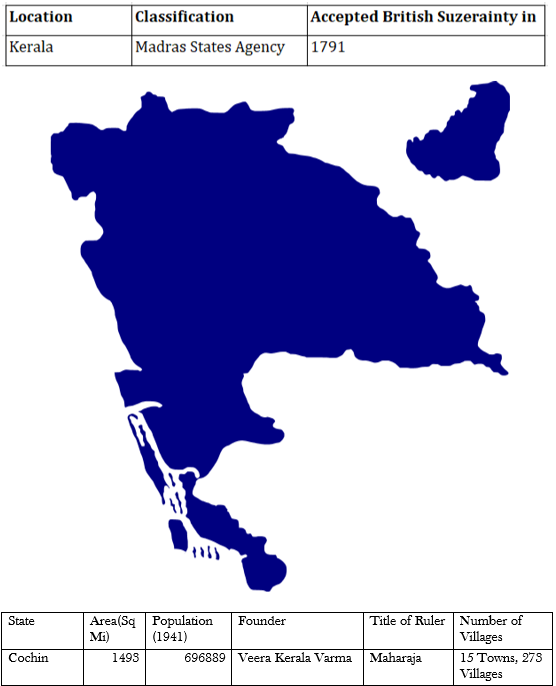During the famed partition of Kerala by Cheraman Perumal, the territory of Cochin – the Swaroopam centred around Perumpadappu was given to Veera Kerala Varma, the son of his sister with the Perumpadappu Namboodri. The transfer of power to sister's son is the source of Marumakkathayam law of succession where the succession happens through female line – the original five lines or Thavazhis being that of the five sisters of the first king and the eldest male in the five lines is anointed as the king. On the other hand, this split of the kingdom gave easy opportunity for the Samoothiri of Calicut to make inroads into Cochin. The formal name of the ruler is Perumpadappu Gangadhara Veera Kerala Thrikkovil Adhikarikal. The kingdom was called Perumpadapu Swaroopam, Madarajyam, Goshree Rajyam and Kuru Swaroopam amongst others.
The 1341 flooding of Periyar River resulted in destruction of Muziris near Kodunganallur and Cochin rose as an alternate to it. The establishment of Cochin is dated between Marco Polo, an Italian traveller who didn't refer to it in 1290 and Ma Huan, a Chinese traveller who referred to it in 1399. The capital was shifted to Cochin in 1405 from Mahodayapuram. Their original capital city of Vanneri already fell to Calicut and the royal family fled south. They moved from Pazhayannur to Thiruvilvamala and then to Vellarappilly and Chazhur before settling at Thrippunithura. The capital city shuffled between Cochin and Thrichur for a considerable period after that while Thripunithura became the seat of the ruling family. Cochin is one of the very few Kshatriya ruling lines in Kerala and others, including Venad and Calicut had to perform a Hiranyagarbha.
The naming convention in the royal family went thus –
Eldest son – Rama Varma
Second son – Kerala Varma
Third son – Ravi Varma
Fourth son – Goda Varma
Keep reading with a 7-day free trial
Subscribe to cbkwgl’s Newsletter to keep reading this post and get 7 days of free access to the full post archives.



